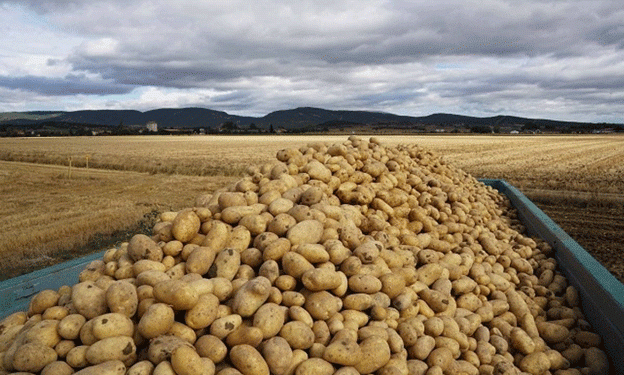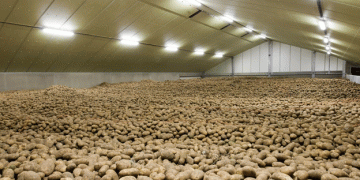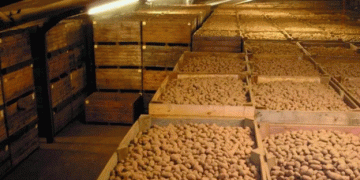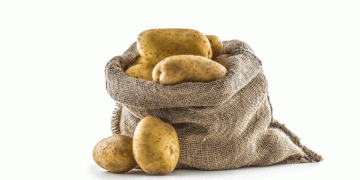Spain is experiencing a rise in mid-season potato production, expected to grow by 3.1% during the 2024 campaign, reaching a total of 822,063 tons. This increase, reported by the Ministry of Agriculture, Fisheries, and Food (MAPA), comes despite a reduction in the area dedicated to this crop, which fell by 1.8%, from 28,713 hectares to 28,191 hectares.
Two key regions, Galicia and Castilla y León, continue to dominate the production of mid-season potatoes, accounting for nearly 60% of the national output. In Galicia, the total area devoted to this crop has slightly decreased by 2.2%, now at 15,023 hectares. However, favorable weather conditions and enhanced farming techniques have led to a 5.8% rise in production, which now stands at 298,289 tons.
The province of Orense is one of the main contributors to Galicia’s success. Despite maintaining almost the same area under cultivation—around 5,650 hectares—the region has experienced a sharp production increase to 146,400 tons. This highlights the impact of optimized agricultural management and favorable growing conditions. In contrast, the province of La Coruña has seen a decline in both planting area and production, with 3,768 hectares yielding 60,221 tons.
Castilla y León, the other major producing region, also faced a 2.2% reduction in its cultivation area, which now totals 5,393 hectares. Nonetheless, the region’s production is projected to rise by 4.5%, reaching 266,111 tons. Provinces like Valladolid and Salamanca are expected to see particularly notable increases in potato yields in the upcoming season.
Factors Driving the Increase in Potato Production
Several factors have contributed to Spain’s increasing mid-season potato production despite a shrinking planting area. Advancements in seed quality, more efficient farming practices, and favorable climatic conditions have all played significant roles. Additionally, mid-season potatoes, which are planted in late winter and harvested in early summer, benefit from more stable weather patterns compared to early or late-season crops, reducing the risk of climate-related crop losses.
According to MAPA, the overall rise in production can be attributed to better crop management strategies and improved disease control measures, helping farmers make the most of the available land. The focus on optimizing yields per hectare rather than expanding cultivated areas has become a strategic response to the pressures of land availability and sustainability concerns.
Outlook for 2024
With a continued emphasis on enhancing crop yields and responding to market demand, Spain’s mid-season potato sector is poised for further growth in 2024. The shift toward maximizing output from a smaller land base is likely to set a trend for the future of potato farming in the country. If favorable weather patterns persist and farmers continue to adopt innovative farming techniques, Spain could see sustained increases in potato production, ensuring its competitiveness in the European market.
Spain’s mid-season potato production is forecasted to increase, even as the area dedicated to this crop decreases. Regions like Galicia and Castilla y León are leading the way in adapting to new farming challenges through optimized agricultural practices. As farmers continue to innovate, Spain’s potato industry is well-positioned to maintain and even enhance its productivity in the coming years.





